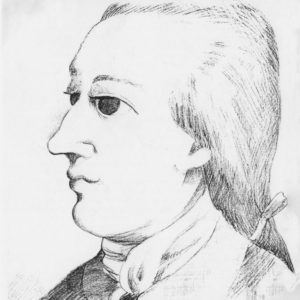The Moral Roots of the Climate Crisis
By Dennis Klocek 21 min read
This is the last chapter in “The Harmonies of Storms” Dennis’ PDF eBook on the Music of the spheres; Harmony in climate change.
In his widely acclaimed movie, An Inconvenient Truth, Al Gore concludes that the climate crisis is in reality a moral crisis. Just what does that mean? How is morality, traditionally a soul or spiritual value, related to the science of climate research? Looking for an analog or image to address this question perhaps the legend of Cain and Able can provide a starting point.
 In the legend Abel was the first son of Adam and Eve. He was what contemporary theorists would call a forager. That is he did not produce food but gathered what was available. Cain on the other hand would be called a pastoralist or agricultural technician. He made instruments to prune trees and to plow the soil and to control fire. The ancient god Jehova recognized the sacrifice of Abel because Abel made no attempt to transform the givenness of the natural world. Jehova did not recognize Cain’s sacrifice because the fruits and vegetables presented for sacrifice were not taken from nature directly but were “engineered” by Cain in his own way. This difference is the root of the fratricide that lies at the beginning of technology. The pastoralists were not only adept at making tools they also were often bellicose.
In the legend Abel was the first son of Adam and Eve. He was what contemporary theorists would call a forager. That is he did not produce food but gathered what was available. Cain on the other hand would be called a pastoralist or agricultural technician. He made instruments to prune trees and to plow the soil and to control fire. The ancient god Jehova recognized the sacrifice of Abel because Abel made no attempt to transform the givenness of the natural world. Jehova did not recognize Cain’s sacrifice because the fruits and vegetables presented for sacrifice were not taken from nature directly but were “engineered” by Cain in his own way. This difference is the root of the fratricide that lies at the beginning of technology. The pastoralists were not only adept at making tools they also were often bellicose.
The most significant and rapidly developed technologies in the shift from Paleolithic times to the Neolithic revolution developed around the forms of more and more sophisticated arrowheads. That should sound distressingly contemporary and is also the central picture in the most ancient of myths.
The advance of the human being as a tool maker has often been accompanied by an aggressive urge to dominate and subdue the natural world. This polarity that arose with the proliferation of advanced weaponry in Neolithic times reveals a fundamental split in the human soul itself. For the purposes of this article the split will be characterized as the tendency to solve the mysteries of life (technologist) and the tendency to want to reveal the mysteries of life. Those who wish to solve the mysteries tend towards power as a solution. Those who wish to reveal the mysteries tend towards wisdom. Cain took the path to personal power and Abel took the path of accepting the wisdom of his god. When extreme, or exclusive either of these two paths can lead to difficulty.
When excessive, the power path leads to warfare, pollution, and aggressive use of the earth’s resources for personal benefit. When balanced, the power path can provide for the advancement of knowledge that benefits all humanity.
When excessive, the “wisdom of my god” path, leads to fundamentalist beliefs and pogroms. When balanced the “wisdom of my god” path can provide workable cosmological models for humans regarding the moral tasks of humanity. The obvious task is to somehow create conditions where the forces at work in both paths can be combined.
To do this requires a different approach to science than reductionism or abstraction and a different approach to religious experience than dogma. However, neither of these approaches when experienced exclusively has a cosmology that can allow science and religion to unite into a moral perspective of the role of the human being in nature.
Without a progressive cosmology that sees a cosmic purpose for the relationship between humans and the natural world the possibility of personal transcendent experience, the moral dilemma that is the root of the climate crisis becomes very problematic. It will be difficult to solve the problems of the climate crisis with tools that can not allow for a cosmological perspective of the significance of human beings in relation to the life of the earth. To continue seeing the issues in terms of the data available to climate scientists, industry researchers and special interest groups is most likely to produce the mood of impasse currently dominant in this debate. Absent a significant cosmology
that can link the human destiny to the destiny of the whole planet earth and the biography of the earth, all we are left with is the statistical and computational reference to physical data. No matter how compelling this data has not managed to inspire much change in the business as usual mindset of contemporary politicians and their constituencies.
Much of the split between the human being as a being who is part of nature and a being that is also capable of being simply an observer of nature has to do with the way in which numbers are currently being used to study nature. It is possible that the scientific revolution that started at the time of Copernicus, Galileo, Kepler and Newton has evolved into a condition where abstract cause and effect reasoning now prevents human beings from relating morally to the climate crisis. In a contemporary cosmos of immense spaces where the Earth is just another mediocre object it is possible that contemporary science has sown the seeds of inertia in humans regarding climate issues. Are the climate crisis, political crisis, environmental crisis, and social crisis that are presently deepening in an alarming way simply mistakes or is there something deeper behind them for humans to consider?
Even into the most ancient times when science, art and religion were much closer in their intent there were two fundamental poles in the way that human beings interacted with the great mystery of the relationship between the human being and the destiny of the Earth. In the ancient world astronomy, architecture and the forming of calendars were the marks of how the people lived on the Earth as a culture, that is, with a consciousness that went beyond just hunting and gathering. The Egyptians were successful in their problem solving using geometry to build their buildings and employing phenomenological astronomy to produce calendars. But the Egyptians had only rudimentary arithmetic. By contrast, the Babylonians developed place value arithmetic to a high order that resulted in accurate astronomical tables for predicting eclipses and complex calendars and counting systems but their knowledge of geometry was undeveloped.
The differences between these two civilizations reveal the possible fundamental polarities in the contemporary process of mathematical scientific inquiry, those being geometry and arithmetic. In some ancient societies geometry was the preferred mathematical model for thinking about the world. Geometry requires a more symbolic and metaphysical thinking process. Arithmetic, the foundation of computation is practical and can be used to create abstractions and cause and effect systems of thought. This polarity between metaphysical geometrical reasoning and computational abstract reasoning reflected the world view of the different cultures in which it was found. This polarity can even be seen within one culture. For instance, in Greek times the earlier Platonic world view of archetypes and a geometrizing universe gave way to the more pragmatic and logical Aristotelian view of numerical categories and abstract reasoning.
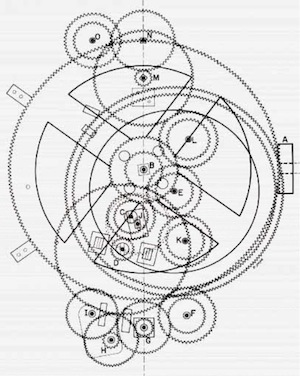 Antikythera mechanism
Antikythera mechanism
Sometimes the two streams come together and a kind of hybrid vigor is the result. Such a vigorous coming together is pictured above. This device is known to scholars as the ”Antikythera mechanism”. It was discovered in the remains of a Roman ship and has been dated at 100BC. It contained 37 separate gears that allowed the seaman to reckon the date, including leap years, and the position of the moon and planets against the Zodiac. It could also predict eclipses and the Saros period for families of eclipses. The Saros cycle predicts that a similarly positioned eclipse will take place after a cycle of 223 lunar months. The device also carries out subtractions, multiplications and divisions.
In one elegant mechanism the star groups of the Zodiac and the planets moving against them in geometrical, proportional relationships are linked to the abstract demands of computation. Here the polarities of the more Platonic view that the planets are the homes of the gods are linked to the more empirical Aristotelian view that planets are calculable entities. These poles are brought together in a celestial computer, all before the time of Christ. The geometry of the ratios and proportions of the mechanism duplicated the phenomena that could be seen with the naked eye, the motions of the planets in front of the fixed stars. The computational capabilities of the device supported the more abstract calendrical and arithmetical functions.
The incredible wedding of practicality, knowledge and technical ability found in the Antikythera device became the total focus of the next wave of culture when Roman engineers, and architects made it possible for the Roman War machine to flourish. Geometry and along with it the symbolic sacredness of metaphysics was essentially lost to the Romans in favor of computation.
The Arabs of the post Roman era brought Hindu and Greek scholars to Arabia where great centers of science, literature, religion and philosophy were established. Especially in the realm of science, the most characteristic energies of the period can be seen. A tremendous outpouring of science that formalized algebra, algorithms, negative numbers, arithmetic progressions and geometries that prefigured Fibonacci and the use of geometric progressions arose in a relatively short period.
But in this flowering a definite separation of the mathematics of the ancient world and the mathematics of the new world was begun, especially in the realm of astronomy. The computational inheritance that inspired the Arabian schools favored abstraction and arithmetical computation as the primary method of science. Geometry was only seen useful in the realm of geometers. The early and late Medieval times in Europe continued the split between the more metaphysical and geometrical Platonists and the rational, categorizing Aristotelians right up into the time of the Renaissance and beyond.
Kepler
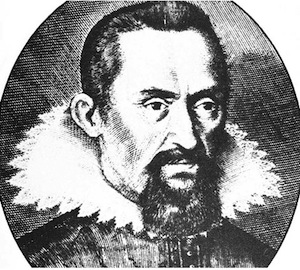
The contrast between the geometrical / metaphysical pole found in the work of Kepler and the emergence of the computational mathematical brilliance of Isaac Newton illustrates this ongoing split perfectly. Kepler was a highly skilled mathematician who could calculate orbital periods in degrees, minutes and arc seconds in his head. However the bulk of his output is in a dense and intricate geometrical reasoning style. His work was deeply geometrical and driven by a search for harmony of the spheres as a kind of religious fervor. The Kepler boyhood home in the town square of a small village outside of Stuttgart stands literally in the shadow of the church that dominates the square. The intricate geometric reasoning coupled with sacredness of mystical experience of the harmony of the spheres that Kepler brought from the ancient world, had to be met the precise phenomenal observations of Tycho Brahe. Without these pragmatic observations Kepler would not have been able to make his breakthrough. The qualities of religious feeling and profound geometrical capacities that would have endeared Kepler to the ancient world are the exact qualities that have caused some contemporary scholars to diminish his contribution to contemporary science. It has been said that Kepler found the three laws of the orbits of planets in spite of himself. Scholars have likened his research to a kind of sleepwalking.
Newton
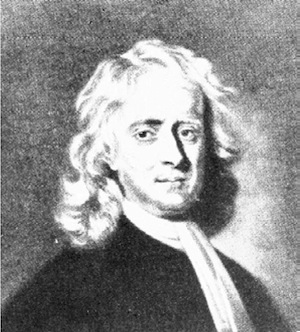
It would be tempting to think that Newton was the epitome of the other pole, the rational, calculating hard nosed pragmatic genius. While it is true that Newton’s work marked a threshold from Medieval geometric, symbolic reasoning into the mechanistic and technological present he himself was not so convinced that this was the best fit for his insights. “I likewise call attractions and impulses, in [a certain] sense, accelerative, and motive; and use the words attraction, impulse, or propensity of any sort towards a centre, promiscuously, and indifferently, one for another; considering those forces not physically, but mathematically: wherefore the reader is not to imagine that by those words I anywhere take upon me to define the kind, or the manner of any action, the CAUSES or the PHYSICAL REASON thereof, or that I attribute forces, in a true and physical sense, to certain centres (which are only mathematical points); when at any time I happen to speak of centres as attracting, or as endued with attractive powers.” (Principia, Definition VIII)
Here, in his own words, the champion of the cause and effect physicality that drives physics research in the realm of technology denies that the mathematical reasoning he is discovering has a relation to the physics that it spawned.
The renowned Newton scholar, Professor E.Å.Burtt described this dilemma being faced by the giants of the scientific revolution by saying that.” To get ahead confidently with their revolutionary achievements, they had to attribute absolute reality and independence to those entities in terms of which they were attempting to reduce the world. This once done, all the other features of their cosmology followed as naturally as you please. It has, no doubt, been worth the metaphysical barbarism (author’s italics) of a few centuries to possess modern science. Why did none of them see the tremendous difficulties involved? Here, too, in the light of our study, can there be any doubt of the central reason? These founders of the philosophy of science were absorbed in the mathematical study of nature.’
Why would this in itself be the source of “metaphysical barbarism”? Wasn’t the study of nature from a mathematical point of view present since the very beginning of history? But we need to be particularly careful here. Since the transformation of Hindu and Greek mathematics and astronomy into Arabia a new impulse had entered the use of mathematics. That impulse was the tendency to link earthly phenomena, like the path and velocity of a falling body to the path and velocity of a celestial body, through an extrapolation based on mathematical calculation. Of course this is what we just heard Newton deny that he was doing. But it is just what posterity has taken up from his work as his signature contribution. What this says is that everywhere the prime mover is just the forces and masses of mathematically arranged elements.
This categorizes our Earth as a numerical rock permeated by forces completely beyond the control of, and sometimes at direct odds with, the soul activity of human beings. This is in a whole other universe from the experience that the Earth is our mother that is linked to us through the common consciousness of shared forces. It opens the door to the experience that the cosmos is an ever expanding alien dimension of terrible forces ruled by intractable mathematical laws. It also instigates a human will to power to solve the mysteries of those terrible forces and control and subdue the forces of the earth before they control us. In this shift of consciousness the mother Earth has somehow become the enemy. How could this happen?
A fundamental feature of the scientific revolution of the late 1700’s was the concept that the forces on earth were similar to the forces that drive the universe. This led to the drive for laws that explained these relationships. As science has progressed it has become increasingly difficult to find universal relationships between physical forces and the forces that rule the celestial spheres. This is brought to a head in the inability for quantum mechanics to include gravity in its theoretical embrace. The most fundamental celestial element is the very element that cannot be explained by ever finer descriptions of physical forces. This is a particularly revealing problem.
Prior to the widespread use of reductionist mathematical techniques it was implicitly understood that it was possible to identify locations on Earth that had particular resonances to celestial positions. The placement of observatories at particular places on the Earth was a mysterious feature of many ancient cultures.
Why would the ancient peoples spend so much time and effort to create observatories to predict the rising and setting of planets and the motions of the fixed stars? To some researchers not only were there observatories to look out to the heavens but the placement of temples, shrines, and holy places was determined through even more mysterious techniques for finding resonance between celestial coordinates and terrestrial positions. These activities known as geomancy were mystically inspired attempts to link the Earth to the movements of the planets and stars. Through time there have been many versions of these techniques but none of them could be used as a basis for scientific inquiry except for celestial mechanics and astronomy. Through the development of celestial mechanics the ability to measure the exact position of a star or planet is quite within the realm of computation.
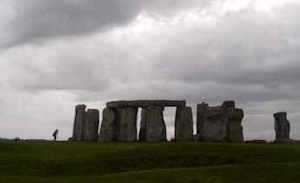
However, to try to project this position onto a spinning Earth and be able to say with confidence that Jupiter will be over the central Pacific for most of 2006 is counter to contemporary computational, or rational thought. And yet, supported by numerous case studies, this is just what is being presented in this book . How can the relationship between planetary movements and an el Nino be tracked in a mathematically rigorous way? To do that requires two things. The first is that some rational, mathematical and reproduceable system of projection be used so that experiments can be set up. The second is that some sort of empirical, phenomenological, data rich information source be readily available to track and record the results of the mathematical experiments.
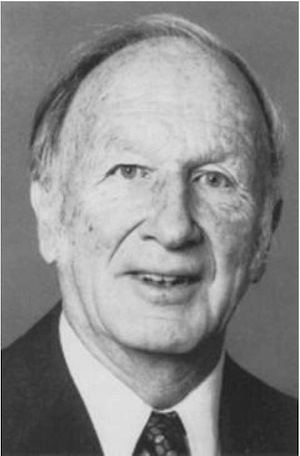
Edward Lorenz
The computer and the internet offers a researcher great opportunity for gathering phenomenological climate information. However setting up a computational model for climate study is a uniquely difficult task. Edward Lorenz the father of chaos theory originally found his insights by trying to model weather systems. Lorenz eventually concluded that in certain ways climate patterns defy mathematical modeling even with enhanced computer power. Lorenz worked on slower analog computers and found that the slower more “organic” processing of these early machines could come closer to modeling the intangible interfaces that climate study requires. Even with the slower computational rhythms Lorenz eventually had to concede that even the tiniest error in the formation of the modeling algorithm got magnified exponentially through the process of iterating it in the computer many hundreds of times. At some point chaos ensued as the system sought a higher level of integration.
The chaos made it very difficult to model climate systems in flux.
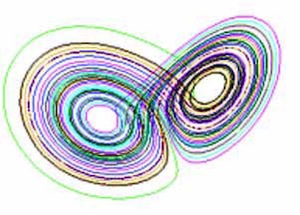
The third image is the famous Lorenz butterfly. It depicts the polar states all processes go through in order to integrate the energies in the whole system. One side of the butterfly is the positive levels of energy where the system is functioning and active then the middle point between the two “wings” is the chaos point where the system loses integrity in order to begin unfolding on the other side of the butterfly in the negative side of the system’s energy economy. This model is used to visualize everything from storms nad hurricane development to population explosions and collapses.
There is however a division of mathematics that can offer modeling potentials for tracking the almost organic or morphological transformations of weather systems and climate patterns. That discipline is known as projective geometry. This system of geometry was invented by Blaise who lived between 1623 and 1662. This work has led to some of the most recent advances in present day geometry but at the time of its discovery it was an outgrowth of the perspective studies of the artists of the Renaissance coupled to the new investigations into optical systems.
To make an enormous subject painfully simple, projective systems need a projector. The simplest projector is a point. The point is not just located in space but is active in interacting with the fields of activity around it. It helps a lot when thinking projectively to use images rather than numbers so the following image is of an optical system interacting with a human eye. Projection was originally developed as a geometric discipline with the rise of optics.
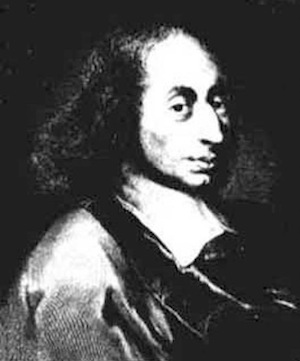
Blaise Pascal
In this optical system there are several projectors. The vanishing point at the horizon is one. Between that projector and the screen of the world there is an expanding perspective of light rays that are the field of the projector of the vanishing point. This thinking comes from the work of the artist that first discovered the optical laws of perspective in the Renaissance. These researches set the stage for the later developments of the higher levels of projective space that was the seed for Riemann and Einstein. The world or in this instance the tree has countless points of light on it that reflect in all directions. In the center of the lens of the eye there is another point where light rays are gathered. Here a reversal happens in the direction that the light rays are moving. The top of the tree is projected down and the bottom of the tree is projected up upon the new screen, the retina.
The now upside down image is gathered once again and moved back towards the brain by the action of the nerves.
There another point like projector, the ganglia of nerves in the area of the hypothalamus / pituitary gland, receives the impulses and once again up becomes down and vice versa as the visual nerves split and merge in new combinations as the nerve impulses flow back towards the visual center in the back of the brain.
The condensation of the image into a point and the polar reversal of the image on the expanded field or screen is the most fundamental operation in projection. In the image of the Lorenz butterfly, the two wings are the opposite fields or phases of activity of the system being studied and the center in the point of chaos where they reverse is the attractor or projector depending upon which side you are on. This is true for sand flowing in an hourglass or the activity around a black hole in astrophysics. The power of projective geometry to model such disparate systems is a sign of its effectiveness for modeling climate. For an in depth and absolutely brilliant and very approachable website on projective geometry please go to the following link for the work of Nick Thomas.
The true challenge in climate study is to work with a modeling technique that least intrudes into the chaotic realm of the attractor or projector. There are two possible approaches to forming such a model. The first is to find an algorithm that when iterated in a computer will be able to replicate the observed phenomenon. This is the approach Lorenz used when he discovered the phase butterfly with the attractor in the center. His conclusion was that the slightest bit of error in the formation of the algorithm leads to great distortion when the algorithm is iterated. That is essentially the difficulty with a computational approach to climate study. Lorenz’s conclusion was that modeling in this was next to impossible because of the sheer amplitude of variables that could modify the algorithm.
The other approach to climate research is to let the phenomena themselves form the iterative patterns and instead seek to find a filter that can allow the significant aspects of the system to emerge as the system goes through the complete set of parameters on both sides of the phase butterfly. The problem here is that the chaos of the manifest phenomenon (climate) is too complex for computational mathematics to model it. One possible solution is to use as a modeling algorithm mathematical tables (log period tables) that already are predictable and then reference the natural phenomenon to the periods and fluctuations of the existing table and see if there is a statistical relationship. The most elegant log period tables available to humans are the periods and harmonic phase relationships found in an ephemeris or table of planetary motions. It is the work done by Copernicus, Galileo, Kepler and Newton to understand these most fundamental time phenomena that led to the scientific revolution that we celebrate today. Today the drive for technological advancement has replaced wonder at the incredible richness and precision of the motion in arc events of the celestial spheres that was the very focus of the work of the founders of current science. Perhaps we have thrown the baby out with the bathwater. Or better yet we have kept the bathwater and don’t even remember that there was a baby.
The eclipse grid model is designed to form a phenomenology that can allow the variables in the system to form the algorithms that drive the model. To study climate patterns in a context of using projective geometric concepts requires finding a point that can serve as a projector that could somehow provide a coincident link between the rhythms of planetary motion in arc events and the unfolding of particular weather or climate patterns. The two most fundamental planets to the unfolding of weather events on earth are the sun and the moon. The single most important point in the relationship between the sun and the moon is an eclipse point. Using an eclipse point for the projector it is possible to see that often on the day of either a solar or lunar eclipse significant geometric patterns arise in the placement of lows and highs in the northern hemisphere.
The creation of the eclipse grid through geodetic projection allows for the construction of a filter that can be used to great advantage when observing weather and climate systems in flux. The eclipse points that form the projector for the grid are constantly being interacted with by other planets. Sometimes a planet is approaching an eclipse point. When that happens there is a kind of Doppler that results in a predictable oscillation of high and low pressure values on the jet curves that are associated with the particular eclipse point. The information about the positions of the planets is taken from an ephemeris and detailed charts are constructed for every motion in arc event that involves an eclipse point.
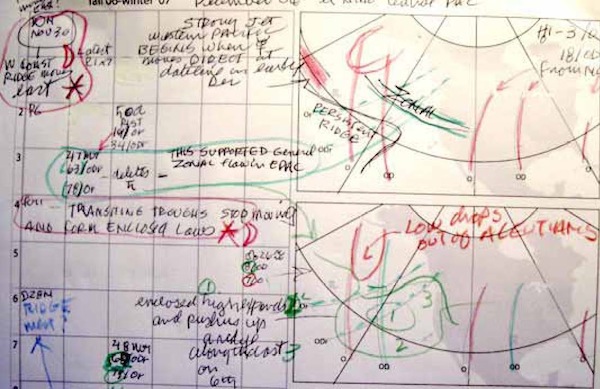
Analog Spreadsheet
A spreadsheet is constructed that allows the tracking of each motion in arc event and the resulting weather patterns that resulted from it. Over time it has been possible to link particular climate patterns to particular combinations of movements. This data is used to build models and to form analogs of historical sequences for climate study.
This procedure amounts to a phenomenology of time that allows the researcher to see into the real time interaction of planetary motion sequences and historic climate responses. The advantage of this approach is twofold. The first advantage is that no algorithm has to be constructed based upon physical data like dew point or lapse rate or even Sea Surface temperature curves. The disadvantage to driving models with algorithms that are susceptible to errors in the initial inputs is neutralized. The algorithms used to drive the model are already known. They are the algorithms that are present in the orbital periods of the planets themselves. They are elegant, robust and best of all they are totally predictable far into the past for the purpose of study and far into the future for the purpose of constructing a long range forecast.
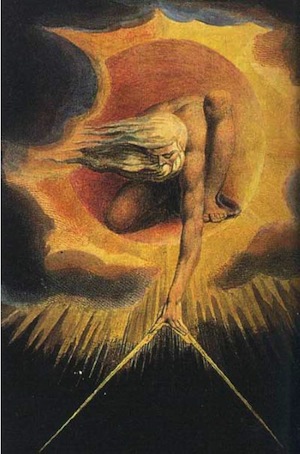
William Blake print of god geometrizing
The second advantage is that the experience of seeing the real time coincidental shifts between motion in arc events and weather patterns is truly remarkable. The observation of a planet moving in arc on a particular day and a dramatic increase in high pressure or in the digging of a storm trough is awe inspiring. This sense of the linkage between motion in arc events of the planets, the geometry of the eclipse grid and observable phenomena in the weather in exact time frames is the doorway to the cosmological experience that we are not alone on just another rocky planet in an immense soulless void. We live on a planet that is alive and whose soul is composed of the tremendously vital sequences of climate patterns that unite all lands and all humans in one organism. From this cosmological perspective it may be possible to imagine morally responsible scientific approaches to problem solving where human needs and the needs of the Earth as a living being interact. From this cosmologically significant point of view we may hopefully be able to say in the future that climate is the soul of the Earth.
Read the full eBook here: The Harmonies of Storms.
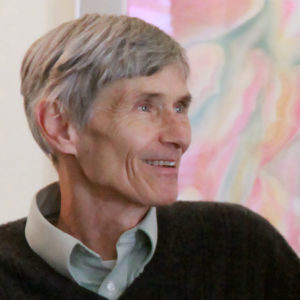
Dennis Klocek
Dennis Klocek, MFA, is co-founder of the Coros Institute, an internationally renowned lecturer, and teacher. He is the author of nine books, including the newly released Colors of the Soul; Esoteric Physiology and also Sacred Agriculture: The Alchemy of Biodynamics. He regularly shares his alchemical, spiritual, and scientific insights at soilsoulandspirit.com.
Similar Writings
Goethe’s Living-Nature Imagination
Those who have tried to grasp and not merely read about the nature-consciousness developed in Goethe, know how elusive this child of the 18th century can be. For no sooner do you grasp what appears to be a limb (or branch), then at once the fragile form disappears. You hold in your hand something akin to the carbon structure of the thing or a burnt etching, but the living experience awaits the next effort of perception.
Etheric Vision
In the inner work of developing your consciousness, there is a stage of development called “etheric vision”. This concept is found in many forms in the work of Rudolf Steiner. To form an idea of this, it is useful to look at the work of Goethe known as phenomenology, or the perception of phenomena. This…
